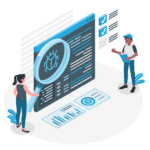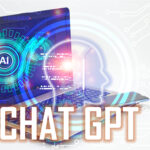ChatGPT Best Practices for Software Developers
Has your business hopped on the ChatGPT train yet? As technology continues to advance, it’s no secret that software developers are always looking for ways to improve their development processes and deliver high-quality software efficiently. One of the latest tools that have been gaining popularity in the software development community is ChatGPT, a type of generative AI and language model that can generate natural language responses based on the input it receives.
In this blog, we’ll explore the best practices that software developers can follow to leverage the power of ChatGPT in their development processes. We’ll cover everything from training ChatGPT models to integrating them into your software applications. Whether you’re just starting to experiment with ChatGPT or you’re an experienced developer looking to optimize your workflow, this blog has something for everyone.
So, let’s dive into the world of ChatGPT and learn how it can help you become a more efficient and productive software developer.
What is ChatGPT?
ChatGPT stands for “Chat Generative Pre-trained Transformer” and is a large language model based on the GPT-3.5 architecture developed by OpenAI. The model has been trained on massive amounts of text data and can generate text that is indistinguishable from human-written text.
With a broad range of applications, ChatGPT can include chatbots, language translation, question-answering systems, and content generation. In the software development community, it has become a popular tool for generating natural language responses to user queries and helping developers streamline their workflows. With its ability to understand natural language and generate human-like responses, ChatGPT can change the way we’ve interacted with software products and apps in the past.
Benefits of Using ChatGPT in Software Development
As the world becomes increasingly digital, software development plays an ever more critical role in shaping how we live and work. And businesses that adopt digitalization efforts and emerging technologies can gain a competitive advantage in this fast-evolving space. By understanding the benefits of ChatGPT, software developers can leverage this technology to create more sophisticated and user-friendly applications, ultimately improving the overall quality of the software products they deliver.
Below are several benefits of using ChatGPT in software development:
- Natural language understanding: ChatGPT can understand natural language input and generate human-like responses. This makes it easier for developers to create chatbots, virtual assistants, and other applications that can understand and respond to user queries conversationally at a faster pace.
- Rapid prototyping: ChatGPT can be used to prototype chatbots and other conversational applications quickly. Developers can use the model to generate responses to user queries and test the application’s functionality without having to write a lot of code.
- Integration with existing systems: ChatGPT can be integrated with existing software applications, such as chatbots and virtual assistants, to enhance their functionality and improve the user experience.
- Boosted productivity: Automation, automation, automation. Generative AI like ChatGPT automates tasks and thinks through concepts and data increasingly faster than the human brain does. That said, development teams can boost productivity by 10x if they implement artificial intelligence like ChatGPT into their SDLC processes.
Overall, ChatGPT has the potential not only significantly to improve development processes, but ultimately save time and improve business operations for software engineering teams of any size.

ChatGPT Use Cases in Software Engineering
Software engineers and developers are using generative AI, specifically ChatGPT, in a variety of ways to improve their workflows, enhance product delivery, create more sophisticated applications, and deliver better user experiences. Some common ways that software engineers are using ChatGPT today include:
Building chatbots: ChatGPT can create chatbots that can interact with users in a natural language and support common queries. This can improve the overall product experience and streamline customer service processes. The tool can even be trained on specific data sets to create personalized responses for users.
Generating code: ChatGPT can be trained on code repositories and used to generate code snippets based on natural language descriptions of the desired functionality. This can help developers save time and effort by automating the code-writing process and ensure accuracy with software code verification.
Automating testing: ChatGPT can be used to generate software test cases based on natural language descriptions of the desired functionality. This can help developers automate the testing process and ensure their applications function adequately and seamlessly.
Improving documentation: ChatGPT can be used to render documentation based on natural language descriptions of software functionality, enabling developers to create more comprehensive and user-friendly documentation that is easier to understand.
Enhancing natural language processing: ChatGPT can be used to enhance natural language processing capabilities in software applications. This can improve the accuracy and relevance of user input and improve the overall user experience.
6 Best Practices for Software Developers Using ChatGPT
The importance of following best practices for using ChatGPT in software development cannot be overstated. While ChatGPT has the potential to revolutionize the way we interact with software applications, it’s vital to ensure that the model generates accurate and relevant responses. Following best practices helps to ensure that the model is trained on high-quality data, produces accurate results, and is integrated effectively into the development process.
Ultimately, following ChatGPT best practices helps to maximize the value and impact of ChatGPT in software development and ensures that the model continues to learn and adapt to changing user needs and preferences over time.
- Understand the limitations of ChatGPT: While ChatGPT can generate natural language responses, it is not perfect and may produce inaccurate or irrelevant responses. Therefore, it is important to understand the limitations of ChatGPT and carefully evaluate its responses to ensure that they are accurate and appropriate.
- Choose the right training data: The quality of the training data used to train the ChatGPT model can greatly impact its performance. Therefore, it is necessary to choose the right training data that is relevant to the specific use case and includes a wide range of examples.
- Regularly retrain the model: ChatGPT models can become outdated over time as language evolves and new data becomes available. Therefore, development teams must regularly retrain the model with updated data to ensure that it continues to generate factual and applicable responses.
- Use context to improve accuracy: Context is significant in natural language understanding, and providing context to ChatGPT can help improve its accuracy. Therefore, developers should prioritize providing as much context as possible when feeding input to the model.
- Test and refine the model: ChatGPT models require testing and refinement to ensure that they are rendering valid and appropriate responses. Therefore, it is crucial to test the model with a variety of inputs and refine it based on feedback to improve its performance over time.
- Ensure ethical and responsible use of ChatGPT: To ensure the ethical and responsible use of ChatGPT, it is vital for developers and other stakeholders to carefully consider the potential impacts of their applications and take steps to mitigate any negative consequences. This might include developing clear guidelines for using ChatGPT, testing and monitoring the model for accuracy and bias, and seeking diverse perspectives and feedback throughout the development process.
By following these best practices, software developers can effectively leverage the power of ChatGPT to help accelerate go-to-market speed, increase business productivity, and create more natural and intuitive applications.
As generative AI models like ChatGPT continue to advance, it is clear that they will play an increasingly important role in the future of software development. By staying up to date with the latest developments in this field and following best practices, software developers can leverage the power of generative AI to create more sophisticated and user-friendly applications, driving innovation and enhancing the lives of people around the world.
Need to Integrate Generative AI with Your Development Teams?
Look no further— KMS Technology has over 13 years of experience in software development, testing, and consulting services. With resources across the US, Vietnam, and Mexico, we can act as an extension of your team. Speak with one of our team members today to learn more about our generative AI solutions and services, including:
- AI road mapping
- Code verification and optimization
- Software development and testing
- Consulting on AI tools and implementation techniques
- … and much more!
Talk to us today- fill out the form below.









